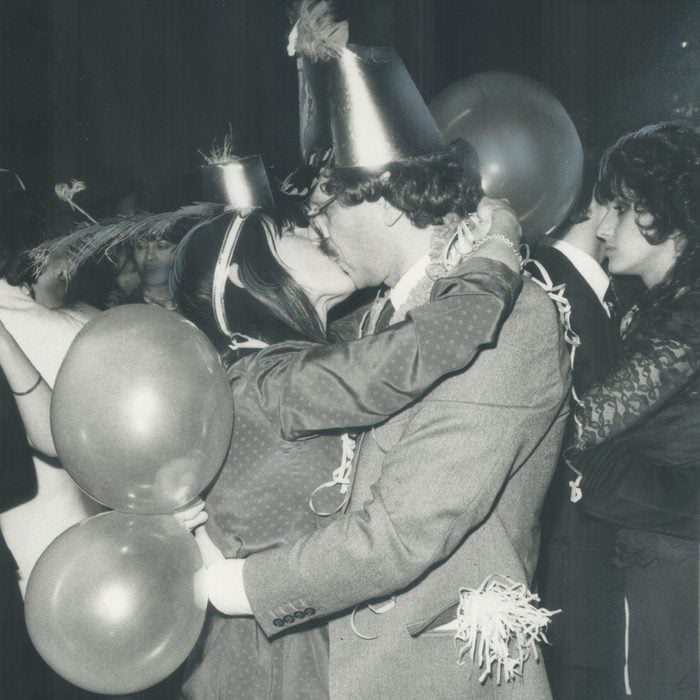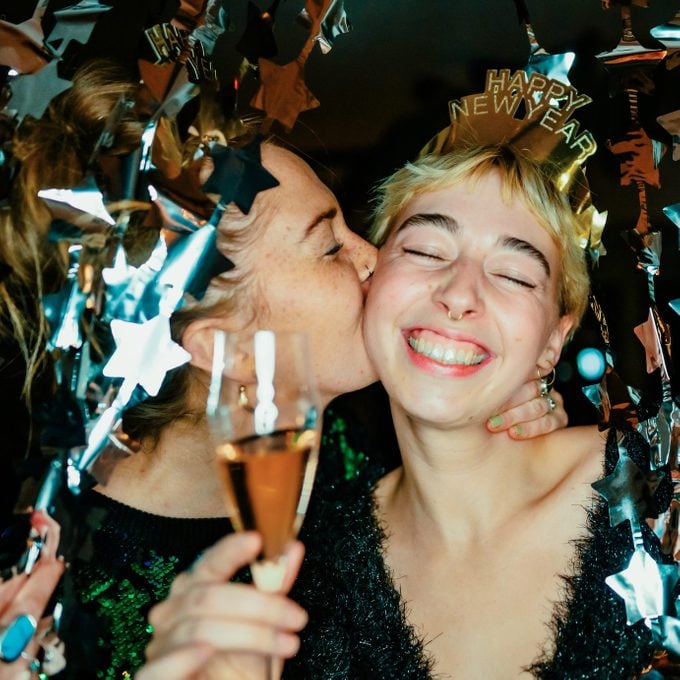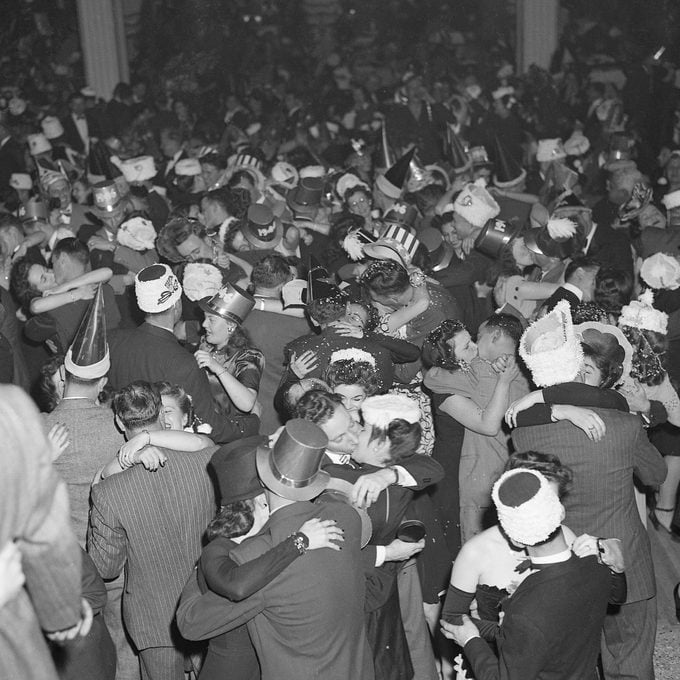Why Do We Kiss at Midnight on New Year’s Eve?
Updated: Jan. 06, 2024

Before you plant a New Year’s kiss on someone, learn the origins of this popular tradition
Humans love a good countdown—whether it’s a rundown of the most popular songs of the week or watching a car’s odometer reach 100,000 miles—and New Year’s Eve is no exception. Whether you already have plans or you’re looking for New Year’s Eve party ideas, chances are the gathering you throw or attend will involve some New Year’s traditions, such as decking the house in New Year’s colors, watching the ball drop and making New Year’s resolutions. You’ll probably also be puckering up for a New Year’s kiss at the stroke at midnight.
But have you ever really thought about why people smooch to usher in the new year? It all boils down to starting things off on the right note. Sure, you could eat pork and sauerkraut on New Year’s Day in hopes of having good luck, but many people prefer this sweeter tradition. (Although preference isn’t enough—you also need consent from both parties.) We spoke with experts in history, folklore and kissing to find out the origins of the New Year’s kiss.
Get Reader’s Digest’s Read Up newsletter for more holiday tips, humor, cleaning, travel, tech and fun facts all week long.
What is the origin of the New Year’s kiss?
Though the precise origins of puckering up the second a new year begins are unknown, the custom is often traced back to two winter festivals: Saturnalia in ancient Rome and Hogmanay, a Viking tradition still celebrated on New Year’s in Scotland. Saturnalia was held annually during the winter solstice, and because it was the biggest party of the year, naturally it involved public drunkenness. Somehow that part morphed into the (likely correct) assumption that kissing was involved. Because Saturnalia was held between Dec. 17 and Dec. 23, experts believe that’s how the New Year’s kiss got its start. Hogmanay traditions, on the other hand, at least involve a New Year’s kiss. But these kisses were doled out to greet strangers and friends along with wishes of a “Guid New Year.”
According to Christina Fitzgerald, PhD, a professor of English literature at the University of Toledo, one of the earliest literary mentions of a New Year’s kiss (if not the first) goes back to the Middle Ages: specifically, Sir Gawain and the Green Knight. One passage takes place on New Year’s Day and refers to a holiday game in which the ladies who lose must give something to the men (and suggests that they do so happily). Meanwhile, the male winners are “not angry” about this rule—an “ironic understatement,” Fitzgerald tells Reader’s Digest. “Every glossed edition and commentary I’ve seen on this assumes the ‘something’ is a kiss,” she adds.
Why do people kiss on New Year’s today?

Apart from following customs with murky origins, what’s the reasoning behind giving someone a New Year’s kiss? This kiss is part of both English and German folklore, which “indicate that whoever a person is with at midnight portends what type of luck they will have for the rest of the year,” says Daniel Compora, PhD, an associate professor of English Language and Literature at the University of Toledo, where he teaches courses on folklore.
So how did this New Year’s tradition make its way to America? Compora says that it was likely German immigrants who brought this aspect of their folklore to the United States. Though it’s unclear when, exactly, that took place, a New York Times article from Jan. 3, 1893, is thought to be the first documentation of the annual custom. Or is it a tradition? Or a superstition?
Whether a New Year’s kiss falls under the category of “tradition” or “superstition” depends on the kissers’ viewpoint. “Superstitions usually imply some element of cause and effect,” Compora tells Reader’s Digest. “If people truly believed that kissing someone could prevent a year of loneliness, it would constitute superstitious behavior.” But, he says, in more modern times, a New Year’s kiss would be most accurately considered a tradition, given that it’s a custom “passed down generationally and practiced widely within a society” and not a belief that one action will result in another. “Quite honestly,” Compora adds, “it sounds like an excuse to kiss people who may not otherwise allow you to do so.”
An important note about that kiss

Compora’s comment brings up another point about a New Year’s kiss: It should be consensual. (So should any kiss, for that matter!) A new calendar year does not give anyone kissing carte blanche. No matter how much you want or think you deserve good luck in the new year, that’s never a valid reason to make another person feel uncomfortable.
How long should a New Year’s kiss last?
This one is best left to your judgment, based on your situation. After all, what’s acceptable for a New Year’s kiss will be different for a long-term couple than it is for a pair of strangers. It also depends on whether you’re attending a low-key celebration with family at home or partying at a bar all night long. But, in general, here’s a good guideline: A kiss should last for as long or as short as is enjoyable for both parties—and appropriate for both the relationship and the setting.
According to eharmony relationship expert Laurel House, “the point of the kiss is about making connections—both physical and emotional. [For a couple], the kiss at midnight is said to strengthen that bond, which is where the superstition comes in. If a couple doesn’t kiss at midnight, people believe that their bond is not as strong and could fail in the year to come.”
About the experts
- Christina Fitzgerald, PhD, is a professor of English literature at the University of Toledo.
- Daniel Compora, PhD, is an associate professor of English Language and Literature at the University of Toledo.
- Laurel House is a relationship expert for the online dating website eharmony and the host of The Man Whisperer podcast.
Sources:
- World History Encyclopedia: “Saturnalia”
- Scotland.org: “Ten Things You Might Not Know About Hogmanay”


